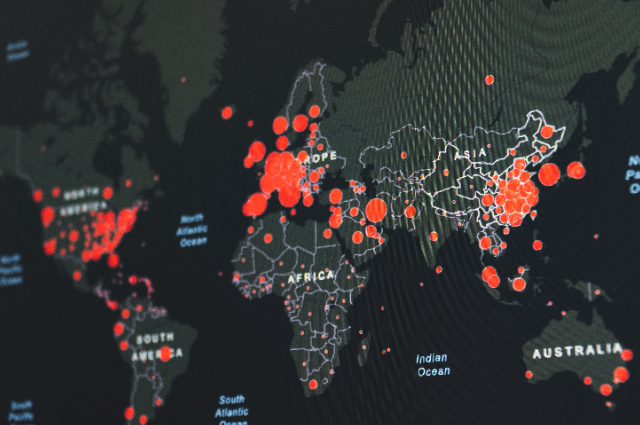
Photo by Martin Sanchez on Unsplash
Abstract
The Biological Disaster Response System (BDRS) is a critical framework designed to effectively address and mitigate the impact of biological disasters, such as pandemics, epidemics, bioterrorism, and infectious disease outbreaks. In an ever-changing world, where the threat of biological disasters is a constant concern, the need for a well-structured, efficient response system has become paramount.
This abstract outlines the key components and functions of the BDRS, highlighting its importance, capabilities, and the multidisciplinary approach it employs to handle biological disasters. The system’s success in protecting public health, minimizing economic losses, and preserving societal stability is contingent on its adaptability, collaboration, and rapid response mechanisms.
The BDRS encompasses four primary elements: preparedness, surveillance and early detection, response, and recovery. Preparedness involves developing and maintaining the necessary infrastructure, resources, and expertise, which may include medical supplies, trained personnel, and research facilities. Surveillance and early detection rely on state-of-the-art monitoring systems and information sharing to identify potential outbreaks swiftly.
Response is a critical component of the BDRS, involving coordinated efforts from various agencies, including healthcare providers, government entities, and public health organizations. Rapid containment, contact tracing, and vaccination campaigns are among the response strategies employed. Recovery focuses on restoring affected communities and re-establishing public services while learning from the crisis to better prepare for the future.
The BDRS operates within a multifaceted framework, requiring interdisciplinary collaboration and information sharing among medical professionals, epidemiologists, government agencies, and non-governmental organizations. Advanced data analytics and predictive modeling tools aid in forecasting outbreaks, optimizing resource allocation, and making informed decisions.
In the face of the COVID-19 pandemic, the BDRS has proven its effectiveness by coordinating global responses, expediting vaccine development, and disseminating critical information to the public. The BDRS’s adaptability and scalability have allowed it to address various biological disasters with varying magnitudes of impact.
The Biological Disaster Response System is not only a strategic asset in the fight against biological threats but also a testament to the potential of global collaboration and preparedness. The system’s ongoing evolution and refinement remain essential to safeguarding humanity against the unpredictable and ever-evolving landscape of biological disasters.
Introduction
A Biological Disaster Response System is a critical component of a nation’s emergency preparedness and response framework. It encompasses a set of coordinated strategies, procedures, and resources aimed at mitigating the impact of biological disasters, such as pandemics, outbreaks of infectious diseases, and bioterrorism incidents. This article will delve into the key components of a Biological Disaster Response System, its importance, and the various challenges associated with it.
Biological disasters can have devastating consequences on public health, economies, and national security. They can manifest in various forms, ranging from naturally occurring infectious disease outbreaks to deliberate acts of bioterrorism. Therefore, an effective Biological Disaster Response System is essential to protect and save lives, minimize the economic impact, and maintain social stability.
Key Components of a Biological Disaster Response System
- Surveillance and Early Warning Systems: The foundation of any response system is the ability to detect outbreaks and potential threats early. Surveillance systems monitor the spread of diseases and emerging pathogens, enabling a timely response.
- Medical Countermeasures: Developing, stockpiling, and distributing vaccines, antiviral drugs, and medical supplies are crucial for addressing biological disasters. Governments and international organizations often collaborate to ensure these resources are readily available.
- Public Health Infrastructure: A robust public health system is vital for both preparedness and response. This includes well-equipped laboratories, trained healthcare personnel, and adequate healthcare facilities.
- Coordination and Communication: Effective communication among various agencies, both domestic and international, is essential for a coherent response. Timely information sharing and coordination between health authorities, emergency services, and other stakeholders are critical.
- Quarantine and Isolation Measures: These are essential for containing the spread of infectious diseases. Isolation of infected individuals and quarantine of those who may have been exposed can help prevent further transmission.
- Community Engagement: Educating the public about the risks, preventive measures, and the importance of following official guidance is crucial. Community participation is essential for an effective response.
- Research and Development: Continuous research into vaccines, treatments, and diagnostics is essential to stay ahead of emerging pathogens. Governments and private sectors often invest in research and development to enhance preparedness.
- International Collaboration: Biological disasters often transcend national borders. International cooperation is vital for information sharing, resource mobilization, and coordinated response efforts.
The Importance of a Biological Disaster Response System
- Saving Lives: A well-prepared system can mitigate the loss of life by responding swiftly and effectively to outbreaks.
- Economic Stability: Biological disasters can have a severe economic impact. An effective response system can minimize economic disruptions by containing outbreaks and maintaining essential services.
- National Security: Bioterrorism poses a significant threat to national security. A robust response system is essential for preventing and mitigating such acts.
- Global Health Security: In an interconnected world, the rapid spread of infectious diseases can have global consequences. Effective response systems contribute to global health security.
Challenges and Future Directions
- Resource Allocation: Adequate funding and resource allocation are often challenges for response systems. Governments must prioritize investments in preparedness.
- Antibiotic Resistance: The emergence of drug-resistant pathogens is a growing concern. Response systems must adapt to this evolving threat.
- Vaccine Hesitancy: Public perception and acceptance of vaccines can affect the effectiveness of response efforts. Addressing vaccine hesitancy is crucial.
- Surveillance Technology: The development and deployment of advanced surveillance technologies, like genomic sequencing, require continuous investment.
- Data Privacy and Ethics: Balancing the need for data collection with privacy concerns and ethical considerations is an ongoing challenge.
Conclusion
Biological Disaster Response System is a cornerstone of public health and national security. It plays a crucial role in protecting lives, economies, and global health. To address the ever-evolving landscape of biological threats, ongoing investment, international collaboration, and adaptability are essential. By continuously improving preparedness and response capabilities, nations can better safeguard their populations against biological disasters.
